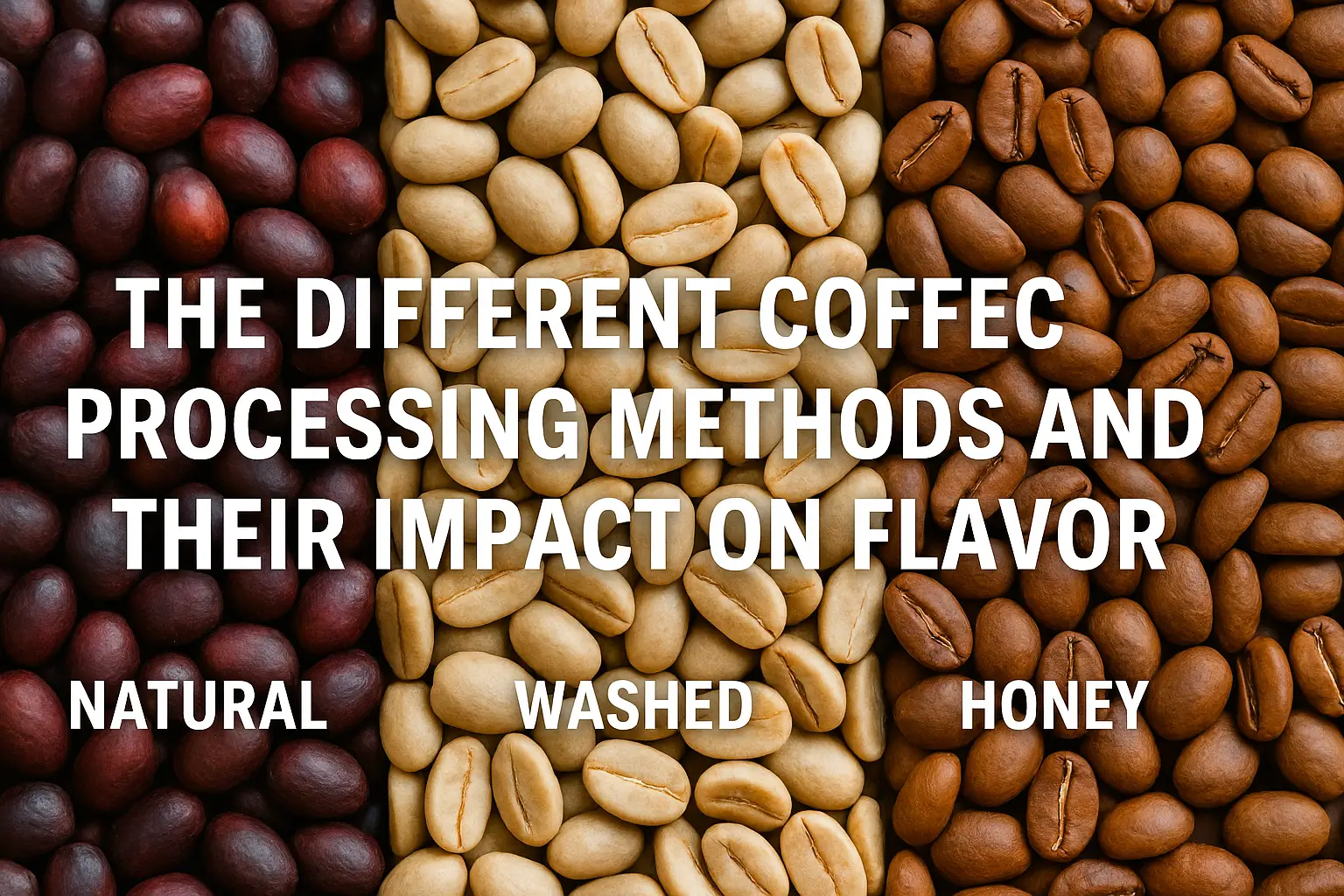When it comes to coffee, flavor isn’t just influenced by the origin or roast—it begins much earlier, at the processing stage. Coffee processing refers to how the outer layers of the coffee cherry are removed after harvesting. This step significantly shapes the flavor, aroma, and body of your brew. In this article, we’ll explore the three main coffee processing methods—washed, natural, and honey—and how each impacts the final cup.
Why Processing Matters
After coffee cherries are picked, the seeds (coffee beans) must be separated from the fruit. The way this is done influences the chemical makeup of the bean, affecting fermentation, drying, and ultimately flavor.
Each method brings out different taste notes, textures, and aromas, making it a vital aspect of coffee production and selection.
1. Washed Process (Wet Process)
Overview:
In the washed process, the fruit is removed from the beans using water before fermentation and drying. This is the most common method used in specialty coffee.
Steps:
- Cherries are pulped to remove the skin.
- Beans are fermented in water tanks to break down the mucilage.
- Beans are washed and dried on patios or raised beds.
Flavor Profile:
- Clean, bright, and crisp
- High acidity
- Clear representation of origin characteristics
Common Regions:
- Colombia
- Kenya
- Guatemala
Best For:
- People who enjoy citrusy, floral, or tea-like coffees
2. Natural Process (Dry Process)
Overview:
In this traditional method, the whole cherry is dried with the fruit still intact, allowing sugars and flavors to soak into the bean.
Steps:
- Cherries are sorted and spread out to dry in the sun.
- Raked and rotated regularly to prevent mold.
- Dried fruit is mechanically removed.
Flavor Profile:
- Fruity, berry-like, and sweet
- Heavy body
- Often complex and wild
Common Regions:
- Ethiopia
- Brazil
- Yemen
Best For:
- Drinkers who love fruity, full-bodied, or dessert-like coffees
3. Honey Process (Pulped Natural)
Overview:
A hybrid between washed and natural, the honey process leaves some of the mucilage on the bean during drying, creating a balance of flavor and body.
Steps:
- Skin is removed, but mucilage remains.
- Beans are dried with varying amounts of mucilage (white, yellow, red, black honey based on amount and drying time).
- No water fermentation stage.
Flavor Profile:
- Sweet and syrupy
- Balanced acidity
- Rounded mouthfeel
Common Regions:
- Costa Rica
- El Salvador
- Nicaragua
Best For:
- Fans of sweet, balanced, and approachable coffees
Other Processing Variations
Anaerobic Fermentation:
- Beans are fermented in oxygen-free tanks.
- Leads to intense, exotic flavor notes.
Carbonic Maceration:
- Borrowed from winemaking.
- Ferments whole cherries in sealed tanks.
- Creates bright, wine-like complexity.
Wet-Hulled (Indonesia Method):
- Beans are partially dried before hulling.
- Produces earthy, herbal, and bold flavors.
Choosing Based on Your Taste
| Taste Preference | Recommended Process |
|---|---|
| Clean, bright, acidic | Washed |
| Fruity, bold, sweet | Natural |
| Balanced, syrupy, mild | Honey |
When buying beans, look for the processing method on the label. Trying different methods is a fun way to explore how much flavor can vary even within the same origin.
Final Sip
Coffee processing is a key ingredient in the flavor recipe of your brew. Whether you prefer crisp and clean notes or rich, fruity undertones, understanding these methods empowers you to choose beans that match your taste.
So next time you’re shopping for coffee, go beyond the roast and origin—consider how it was processed. It could open up a whole new dimension of flavor discovery.
